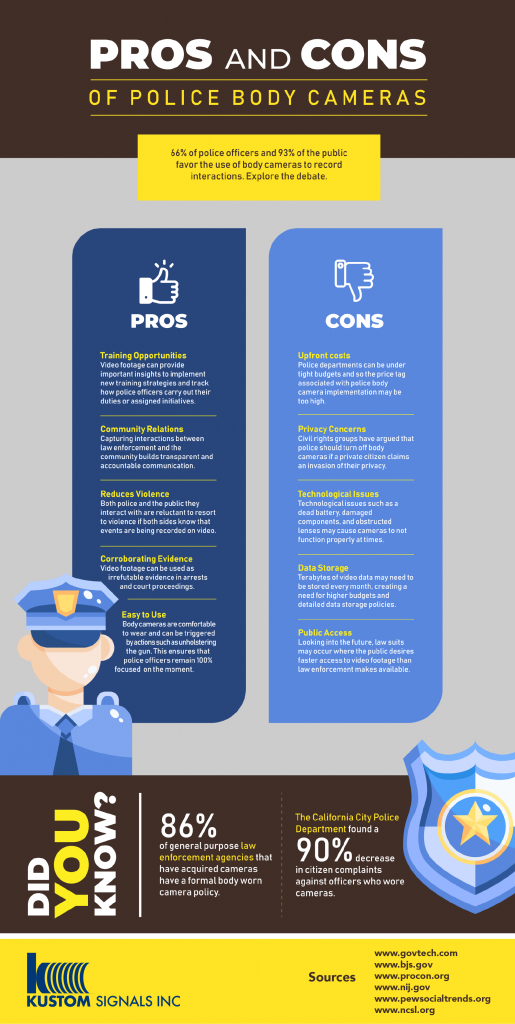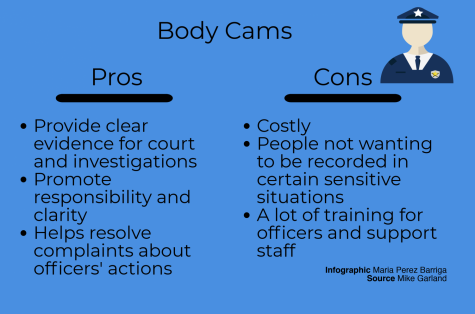pros and cons of police body won camera
Police body-worn cameras (BWCs) are increasingly being adopted in law enforcement to enhance accountability and transparency. However, like any technology, they come with their own set of advantages and disadvantages.
Pros of Police Body-Worn Cameras:
-
Increased Transparency and Accountability: BWCs can provide an objective record of police interactions with the public, which can help to mitigate allegations of misconduct and provide a clearer understanding of events during encounters. This transparency can help build trust between law enforcement and the community.
-
Evidence Collection: Body cameras serve as a reliable source of evidence in court situations, helping to clarify disputes over what occurred during police interactions. This is particularly beneficial in cases involving accusations of police misconduct.
-
Behavior Modification: Both officers and civilians may alter their behavior when they know a recording is in process. This can lead to more respectful interactions and potentially reduce instances of violence or aggressive behavior.
-
Training and Improvement: Video footage can be used for training purposes, allowing law enforcement agencies to review officers' performance and improve tactics or procedures based on real-world scenarios.
-
Community Relations: The use of body cameras can enhance community relations by demonstrating a commitment to accountability, which can ultimately lead to more positive perceptions of policing in communities.
Cons of Police Body-Worn Cameras:
-
Privacy Concerns: The recording of interactions raises questions about privacy for civilians, especially in sensitive situations such as domestic disputes or medical emergencies. The potential for footage to be misused or released can lead to further complications.
-
Cost and Maintenance: Implementing a body camera program involves financial costs related to purchasing the cameras, securing storage for the footage, and maintaining the systems, which can strain budgets, particularly in smaller departments.
-
Administrative Burden: Managing the footage, including ensuring it is properly stored, accessed, and reviewed, can create an additional administrative burden for law enforcement agencies.
-
Misleading Footage: Video recordings may not capture the full context of a situation, as they provide only a specific angle and view of an event. This can lead to misunderstandings of what occurred.
-
Potential for Selective Recording: There is a concern that officers may selectively activate their cameras, capturing only mitigating evidence while neglecting potentially contrary footage. This selective use can compromise the intended accountability benefits.
For further reading on the pros and cons of police body-worn cameras, you can explore the following resources:
- The pros and cons of police body cams - Axon.com
- Police Body Cameras | Pros, Cons, Debate, Arguments, Law - Britannica
- Pros and Cons of Body Cameras | Helbraun Law Firm
- Exploring Pros and Cons of Police Body Cams | 10-8 Video Systems
Having a comprehensive understanding of both sides of the argument can lead to a more informed discussion about the implementation and utilization of police body-worn cameras.
Sources


Related Questions
Work fast from anywhere
Stay up to date and move work forward with BrutusAI on macOS/iOS/web & android. Download the app today.
